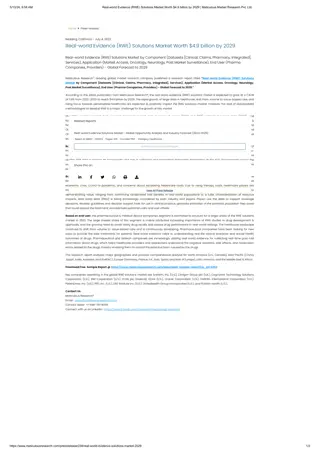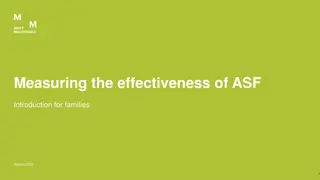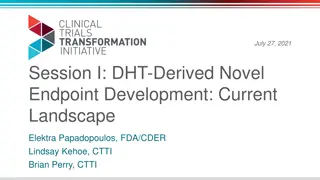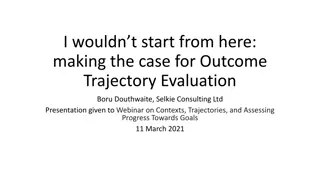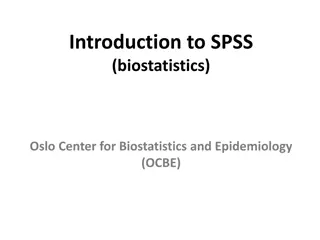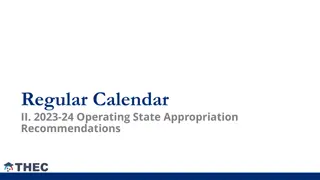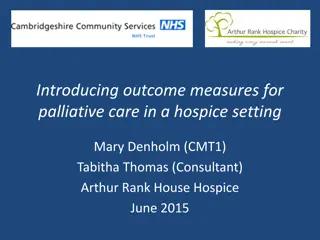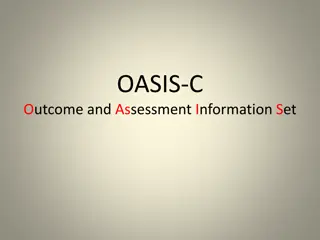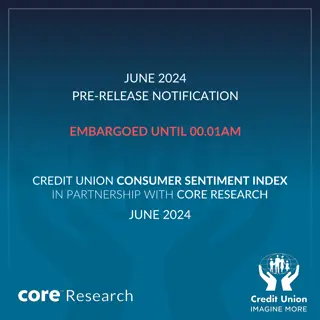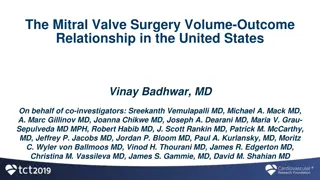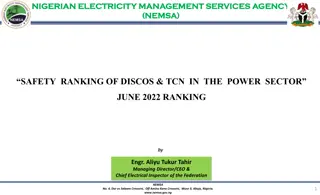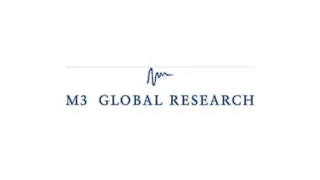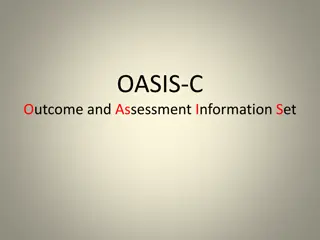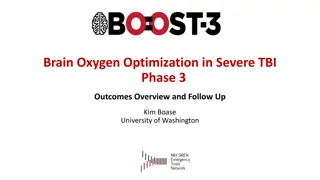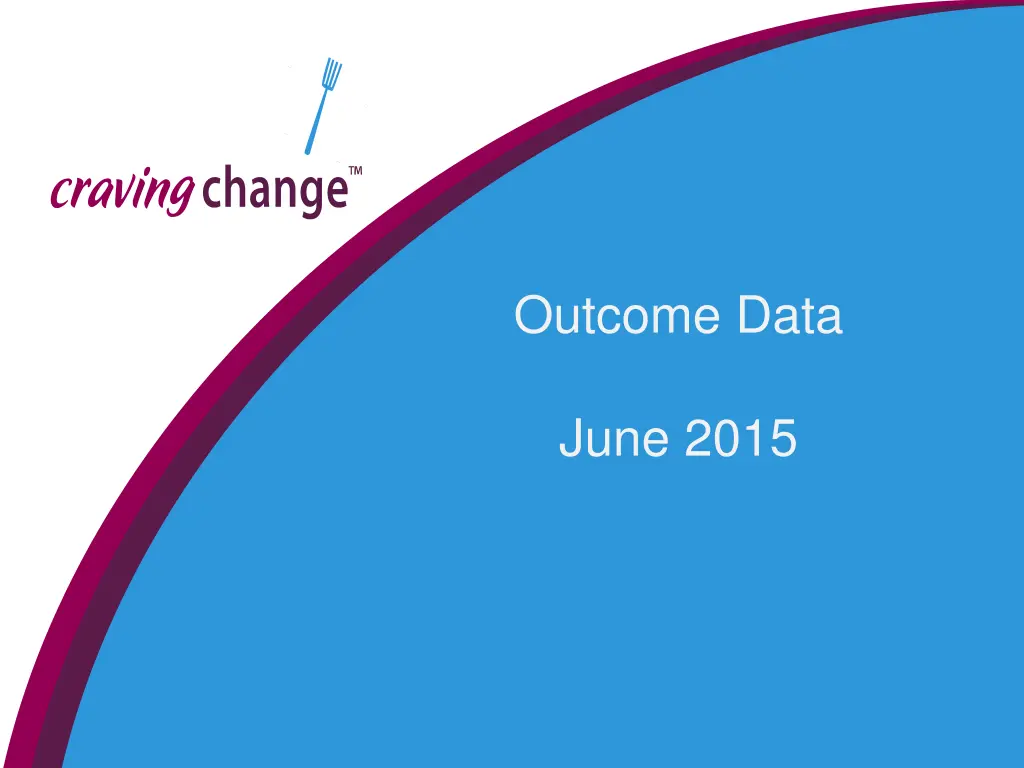
Understanding Eating Self-Efficacy Scale (ESES) Research in 2015
Explore the research findings on the Eating Self-Efficacy Scale (ESES) in June 2015, highlighting how cognitive-behavioral tools positively impact eating behaviors, self-efficacy, and emotional well-being. Discover insights from independent outcome research shared with Craving Change Inc.
Uploaded on | 1 Views
Download Presentation

Please find below an Image/Link to download the presentation.
The content on the website is provided AS IS for your information and personal use only. It may not be sold, licensed, or shared on other websites without obtaining consent from the author. If you encounter any issues during the download, it is possible that the publisher has removed the file from their server.
You are allowed to download the files provided on this website for personal or commercial use, subject to the condition that they are used lawfully. All files are the property of their respective owners.
The content on the website is provided AS IS for your information and personal use only. It may not be sold, licensed, or shared on other websites without obtaining consent from the author.
E N D
Presentation Transcript
Outcome Data June 2015
Eating Self-Efficacy Scale (ESES) Higher score indicates greater difficulty controlling your eating. (lower self-efficacy) The 25 items can be divided into two subsets: Negative Affect e.g. How difficult is it to control your overeating when you feel upset? Socially Acceptable Circumstances e.g. How difficult is it to control your overeating around holiday time?
Eating Self-Efficacy Scale (ESES) Assesses one's confidence in abstaining from overeating in various situations, including when experiencing negative emotions.
von Ranson, Stevenson, Cannon & Shah Eating Behaviors, Vol 11 (2010) 60 adults with chronic health conditions attended a two-session cognitive-behavioural tools class. This class was a precursor to Craving Change . Participants reported significantly decreased eating pathology, increased eating self-efficacy, and decreased shame and guilt.
Outcome research conducted independently and shared with Craving Change Inc in 2015* Site 1. Alberta urban Primary Care Network (PCN) 197 patients Program taught over 4 classes Eating Self-Efficacy Scale (ESES) + descriptive questions Site 2. Northern Ontario Family Health Team (FHT) one city and one small town site 52 patients (data reported only for patients who had 100% attendance) Program taught over 3 classes ESES + descriptive questions * These sites requested that their organization names be removed when sharing their data summaries. If you would like to speak directly with these teams, please let us know and we d be happy to connect you with their permission.
Site 3. Southern Ontario Family Health Team urban site (quantitative analysis pending) Over 100 patients Program taught over 3 or 4 sessions Site developed their own questionnaire including confidence and behaviour change intentions
Site 1. AB Primary Care Network ESES scores Paired-samples t-tests were conducted to compare self-efficacy scores in baseline and 4 weeks surveys as well as scores in baseline and 6 months surveys. There were significant differences in the self-efficacy scores for Overall score, Socially Acceptable score, as well as Negative Affect score between baseline and 4 weeks survey results, and between baseline and 6 months survey results. The results suggest that after attending the Craving Change program, most participants are better able to control eating in both Socially Acceptable and Negative Affect scenarios, and these benefits are sustained over time. (bolding added) Although the assumptions for paired-samples t-tests were met, the low response rate at 6 months may be a potential limitation due to non-response bias. However, independent-samples t-tests show that the participants who did complete the 6 months survey and those who did not complete the 6 months survey have no significant differences in their scores at baseline and at 4 weeks.
Site 2. Northern ON Family Health Team ESES scores The mean of ESES scores at pre-program, post- program and three-month post-program were compared (Table 2). Differences in mean ESES scores between pre-program and post-program (-18.51; p=0.0000), pre- program and three-month post-program (-27.61; p=0.0000), and post-program and three-month post- program (-9.53; p=0.0244) were found to be statistically significant. Mean scores for individual questions on the ESES were examined to identify ESES score trends from pre- program to post-program and from post-program to three-month post-program (Table 7). Questions regarding overeating around holiday time, when feeling upset, when tempting food is in front of you, and when hungry had the highest mean scores at pre-program. These mean scores decreased at post-program and further decreased at three-month post-program. Overall, mean scores for each question decreased from pre-program to three-month post-program. At three-month post-program, mean scores for each question were below 5.0.
Site 1. Alberta Primary Care Network Descriptive Data Of the Craving Change programs offered over four sessions, 70% attended three or more classes. Suggestions for improvement four themes reported The most common theme (16%) suggested offering more sessions, 8% said to offer follow-up. The other two reported themes related to class scheduling and room noise.
Site 2. Northern ON Family Health Team Descriptive Data Offered the Craving Change program over 3 sessions. 73% attended all sessions
Site 3. Southern Ontario FHT Urban Descriptive Data 88.6% attend all sessions of the program 57% of our patients who completed the post questionnaires make some positive change in their eating behaviour
Summary There is improved eating self-efficacy in people who attended Craving Change workshops. Improvements were maintained at follow-up (3 months or 6 months). This data was collected by different teams working independently. People attended programs at different sites, facilitated by different workshop facilitators. This suggests that Craving Changehas been successful in knowledge translation and dissemination to health care professionals and workshop attendees. Engagement with the program is high, with a minimum of 70% of enrolled participants attending at least 3 of 4 classes. Open-ended questions about improving the program suggest attendees want more Craving Change .


